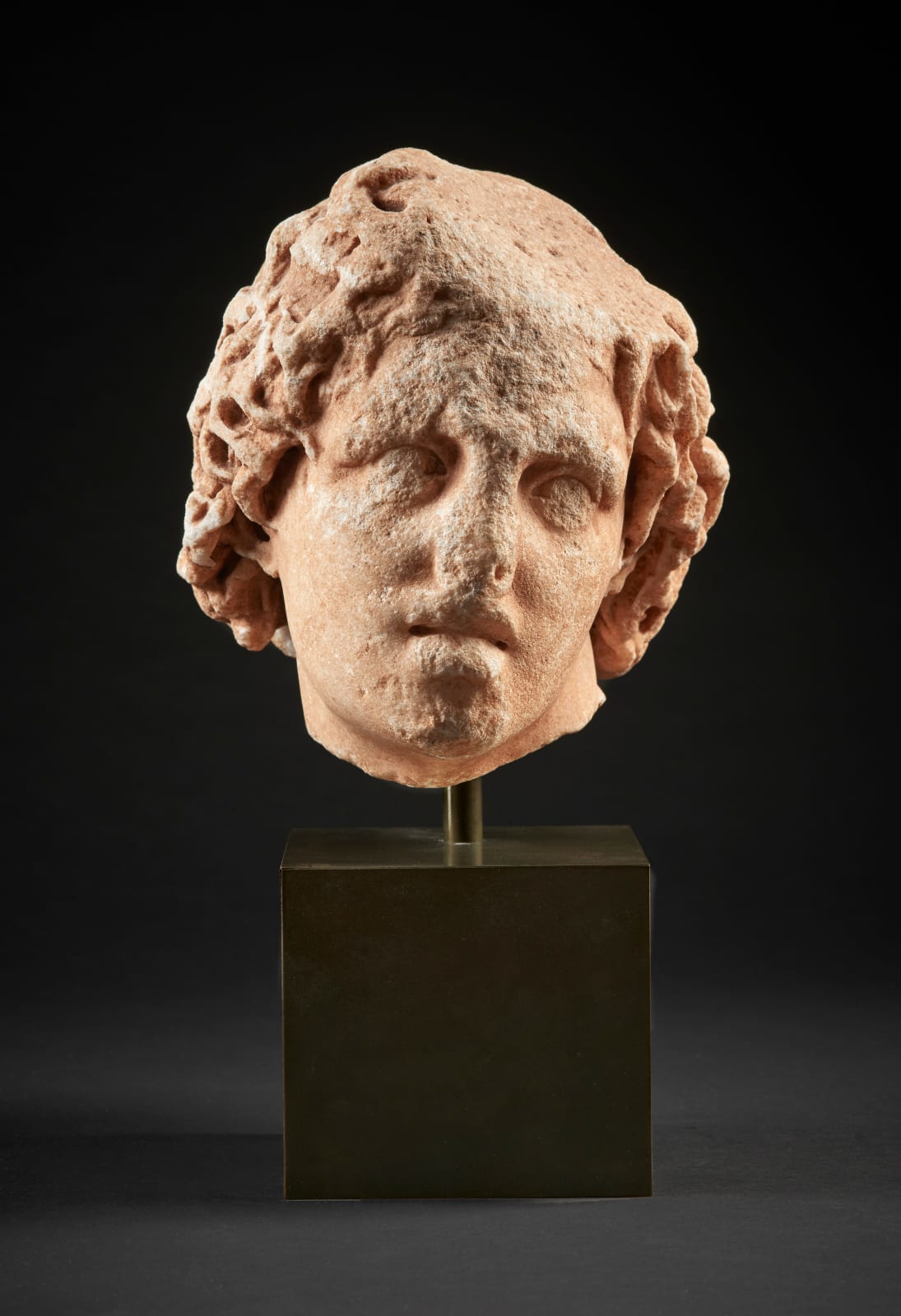


Portrait of Alexander the Great, Greek, Hellenistic Period, 3rd – 2nd Century B.C.
Further images
In Antiquity it was reported that Alexander issued an edict that only Lysippos should cast his image in bronze, that only Apelles should paint him, and that only Pyrgoteles should engrave his likeness on gems (Pliny, Naturalis Historia 7, 125). There are many portraits preserved from Antiquity that have been identified with Alexander the Great. A great number of these are in fact unrelated to one another, and the majority are copies from the Roman period, reflecting earlier creations and prototypes of the Hellenistic Period. Only a few extant likenesses are originals from Hellenistic times, among them a bust of Alexander from Priene and an Alexander from Magnesia-by-Sipylos (second century B.C.); the famous marble portrait from the Athenian Acropolis (340-330 B.C.) and another marble head from Pella (early third century B.C.).
Our marble head of Alexander the Great is best compared to the portrait from Pella, which exhibits some of the well-established features of Alexander attested to in the ancient sources and also preserves an element of freshness and immediacy. Even though the marble has weathered to a granular texture, the surface of our piece still evokes a youthful energy and dynamic presence encountered only in the best stone portraits of the Hellenistic period. The shadowed deep-set eyes and the slightly open mouth add a touch of immediacy to the portrait. Although now missing, a cowlick group of curls once appeared at the top of this head, a feature characteristic of likenesses of Alexander. The long locks of hair frame Alexander’s smooth fresh face and strengthen his leonine appearance. Some of the king’s successors adopted this kind of hair style as a symbol of their royal status.
Provenance
Available Upon Request
Literature
References:
For the head in the Pella Museum see The Search for Alexander, (The National Gallery of Art, Washington, DC, Exhibition Catalogue 1980) 180-81 cat. no. 155 and color plate 25.
For the most recent comprehensive study of the portraiture of Alexander, see A. Stewart, Faces of Power: Alexander’s Image and Hellenistic Politics (University of California Press 1993).


